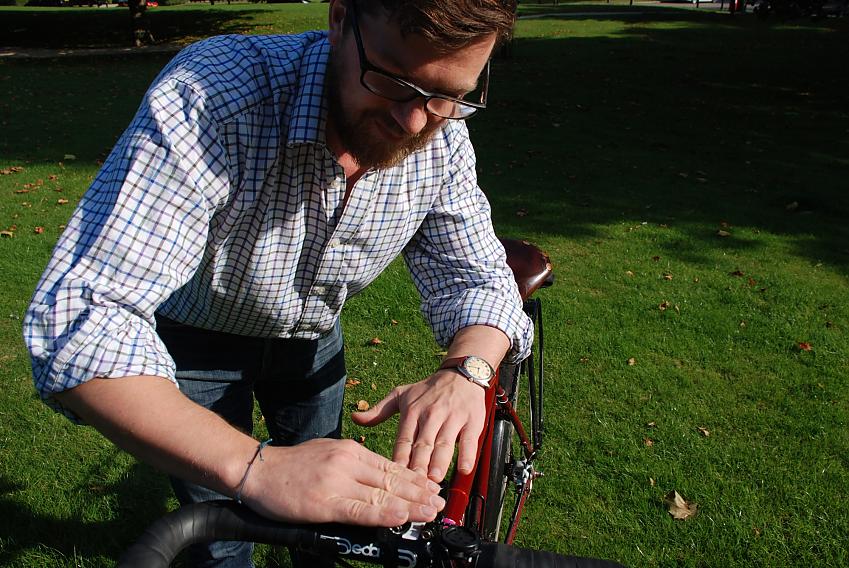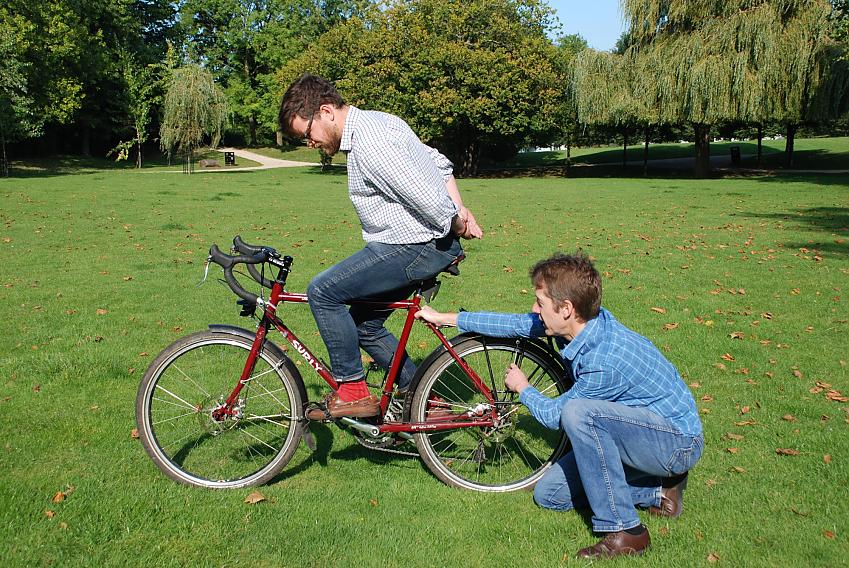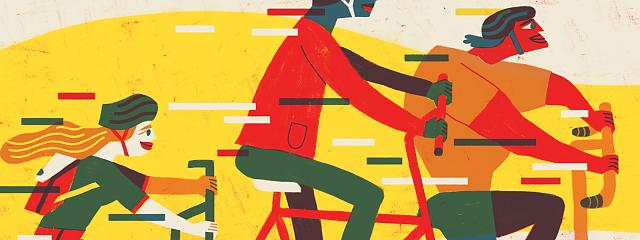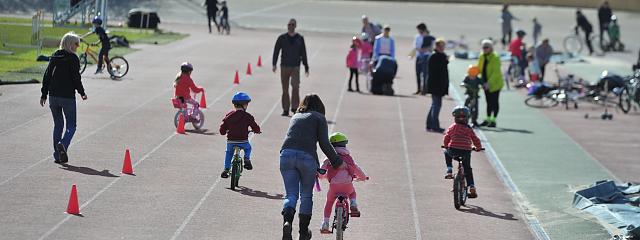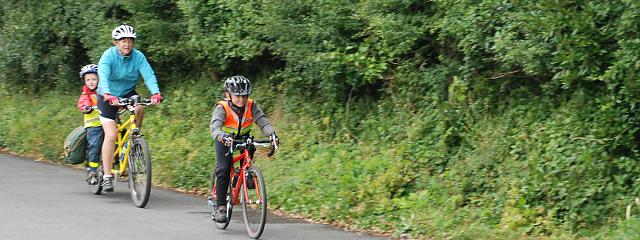
How to choose the right size bike
How to choose the right size bike
Sizing a bike
The right size bike is one that’s in the ballpark for your height and your desired riding position. It doesn’t need to be exact. You can fine tune the fit of any bike by adjusting the relative positions of its contact points – the handlebar, saddle ;and pedals. In the late 1990s, the ONCE professional cycling team did just that and fitted all their racers onto three different bike sizes: small, medium and large.
Repositioning or switching stems, handlebars and seatposts can make big differences. But there are limits. An excessively long aluminium or carbon steerer tube and a tall stack of spacer washers may put the handlebar just where you want but might snap. A super-long stem may correct the reach of a too-short frame but will also affect the steering, making it ‘tiller-like’ and slow.
So the frame dimensions need to be broadly correct. It used to be easy to pick your frame size based on the length of the seat tube. Top tubes were horizontal, so seat-tube length gave an idea of stand-over height. And if the seat tube was x inches, you could infer that the top tube would be roughly y.
Nowadays sloping top tubes are common and the seat-tube length alone will tell you little about whether a bike will fit; you're as likely to fit this 51cm frame as that 54cm frame. Height charts for bike fit based on seat-tube length are only viable if they’re specific to that model of bike.
Bike fit maths
All is not lost, though. Whatever the length of the seat tube or design of bike, you can bet that the average-sized model in any range is meant to fit the average-sized rider. The average-sized bike is the medium or, if labels aren’t used, the mean of the different sizes. So for a bike that comes in 52, 54, 56, 58cm sizes, that’s 55cm.
This is the one designed for Mr Average, who is about 176cm tall. For women’s specific bikes, not unisex ones nor gent’s ones bought by women, the median bike will be designed for Ms Average, who is about 162cm tall.
Bike frame sizes vary about half as much as height. Which makes sense when you consider that seat tube length is linked to leg length. To determine the size of bike in any range that you should fit: halve the difference by which you’re taller or shorter than Mr or Ms Average and add or subtract that to the seat tube size of the medium-sized bike.
For example: if the medium is 51cm and you're 182cm tall, you want the 54cm (51cm plus half of 6cm); if the women's specific medium is 49cm and you're 158cm tall, you probably want the 47cm (49cm minus half of 4cm).
You may fall between sizes. By adjusting handlebar and saddle positions, you’ll fit either. Pick which feels best when you sit on them. If you’ve got a long torso for your height, err on the larger side to ensure the reach to the handlebar is long enough for you; if you’ve got long legs for your height, err on the smaller side and extend the seatpost further.
Your body as a ruler
There are some simple checks you can make at the shop. None requires a tape measure or plumb-line – although you will need something or someone to hold you up while you sit on the bike, and one or more Allen keys to adjust it.
Standover
Stand over the bike’s top tube. You want a gap of a couple of centimetres or more so you won’t catch your undercarriage when you dismount (deliberately or accidentally).
Saddle height
The heel-on-the-pedal method works fine to set the saddle at approximately the right height – you can fine tune later. Put your heels on the pedals and pedal backwards until the cranks are vertical; your extended leg should be just straight. Since you pedal with the ball of your foot, this will give a small bend at the knee when riding.
Handlebar height
Unless you’re specifically buying a race bike, a good starting point is to have the handlebar (at the brake hoods or grips) level with top of the saddle, the height of which you’ve just set. The big drop from saddle to handlebar you see on many road bikes is a modern fashion that many find uncomfortable. Even racers used to set the handlebar only an inch or two below the saddle!
If you can’t get the handlebar high enough by moving the stem up the steerer tube, flipping the stem over, or fitting a new stem, you may want a different kind of handlebar – or a different bike with a taller head tube.
Reach for your handlebar
There’s a handy (sic) rule of thumb for gauging saddle-to-handlebar distance on a drop-bar bike. Put your elbow on the nose of the saddle and stretch your fingers towards the centre of the handlebar.
For a comfortable reach, the bar will probably be somewhere between just brushing your fingertip (for those who like sitting more upright) and about 8cm away (for those who like a more stretched out, aerodynamic position). Put your free hand against the other’s fingertips in a T-shape.
Look for a handlebar position 0-4 fingers’ width from your outstretched fingers; a couple works for me.
This method is OK for flat-bar bikes too. For although flat-bar bikes have longer top tubes, a wide flat handlebar splays your arms further apart, which reduces your reach. Flat-bar bikes often have shorter stems too. Follow the above method but add another finger’s width (or a couple of centimetres) to gauge the reach.
Switching stems gives you several centimetres of fore-aft adjustment before affecting bike handling too much. Saddle setback (on the rails and/or on a different post) gives you a couple more centimetres, at the cost of changing the effective seat tube angle.
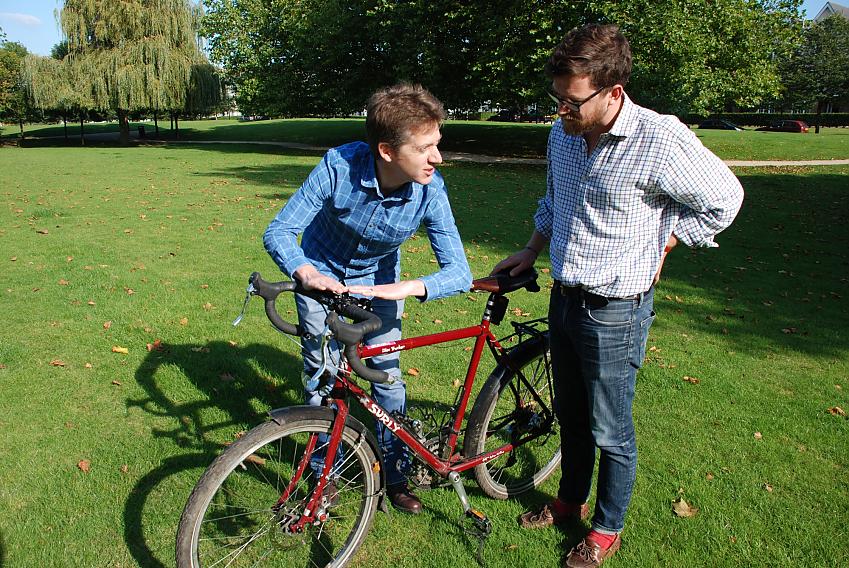
Posture
While sitting on the stationary bike, take your hands off the handlebar and hold them loosely behind your back. Can you maintain your posture? If you can, your core strength is probably good enough to ride in this position. If you can’t, you probably need the handlebar closer and/or higher to avoid putting too much weight on your hands.






